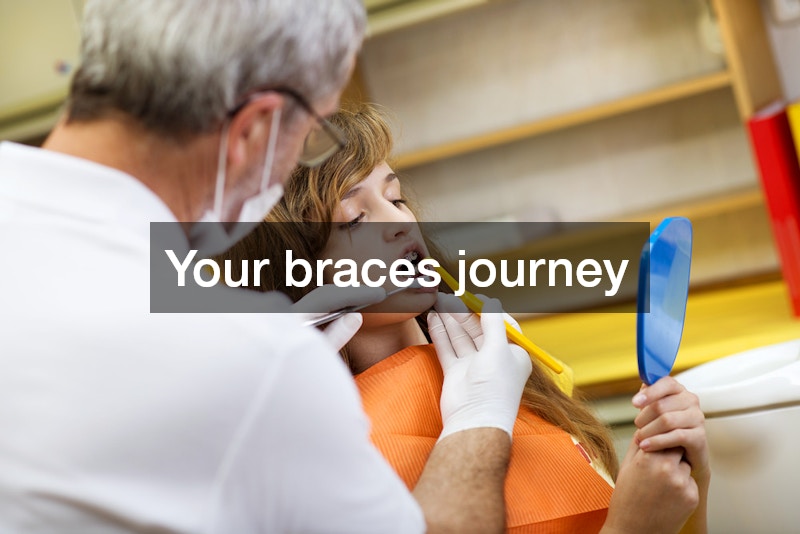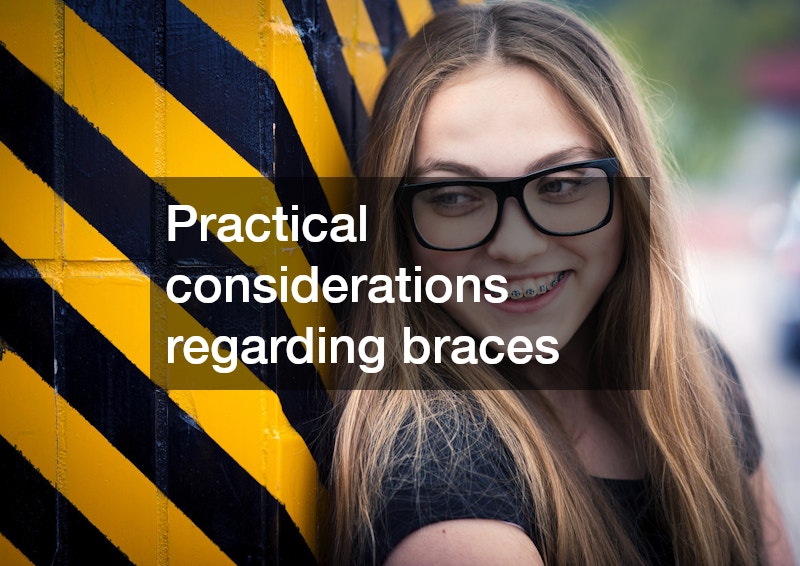
Embarking on the journey of getting braces can be a transformative experience for many individuals who want a better smile and improved oral health. When thinking about braces, most people think of the traditional metal ones that are often seen on teenagers. However, orthodontic treatment has evolved over the years. Today, it’s important to consult with an orthodontists service, with their specialized knowledge. These specialists will help guide patients in selecting the most suitable type of corrective braces. One increasingly popular option is straight wire braces, which offer improved precision and comfort throughout the treatment process, making them an appealing choice for those starting their orthodontic journey.

Your braces journey may seem daunting at first, but it can be manageable and rewarding with the right information and support. Patients can expect a range of adjustments in their daily routines, from dietary changes to new oral hygiene practices. It’s essential to have realistic expectations of what life with braces will be like.

This article outlines practical considerations regarding braces, equipping readers with the knowledge needed to navigate this journey confidently. Whether you’re a prospective patient or simply researching the topic, understanding these practical aspects can make all the difference in achieving that radiant smile you’ve always wanted.
Today, dental offices in most areas offer an array of teeth straightening options, ranging from traditional metal braces to clear straightening trays, such as Invisalign. People once thought of corrective braces as something for teenagers, but it’s common for adults to wear premium braces like Invisalign to straighten their teeth in 2024. Many adults missed out on braces during their teens or experienced tooth loss in adulthood, which created gaps. A dentist can fit an adult with teeth aligners to correct such problems just as they can fit a teen.

To address overlapping or gaps between teeth, undergo a braces assessment at your local dentist’s office. Any traditional orthodontics office can conduct this assessment. At this appointment, mention any concerns you have or special situations, such as musicians who need the unfettered function of their mouth or business people who want to hide their braces, so they don’t show up in meetings. Be honest and let them know your needs!

Now that you’ve learned more about the process of getting braces and what they can do for your smile, you can start your search with confidence! Ask friends and family for recommendations. After you find a great service, you’ll be able to point people in their direction!

If you are concerned about the way your teeth look, you may want to visit an orthodontist to discuss using braces. Are braces orthodontics? Yes, they are an orthodontic device that is used for moving the teeth to the proper placements so that they are straighter. If you are looking for affordable braces for low income families, there may be dental problems available through the state that will allow you to pay for braces. Alignment teeth braces are often kept on for a couple of years, and there is usually a monthly payment that is made for the treatment.
Are there different types of braces? Yes, there are different types of braces, including clear braces, braces that snap around the bar so that no bands are required, and braces that require headgear. It’s helpful to know which kinds are available when you make your choice for braces. Some are more expensive than others. Clear braces are generally more expensive, but many people prefer the way they look. Braces in general can be expensive, and many people are turning to clear aligner trays in order to save money on their orthodonture. Find out from your orthodontist whether you are a good candidate.

For the millions of American children, teenagers, and adults who need braces, the discreteness and near-invisibility of some of the more popular braces alternatives can seem like a perfect solution to their gaps, crowding, or over- or underbite treatment. But the benefits of these alternatives are not merely a vanity exercise. There can be actual physiological — even professional — advantages to braces alternatives such as ceramic braces, lingual braces, and Invisalign.
One major concern with traditional metal braces is the difficulty in keeping them clean. Orthodontists usually recommend that their patients avoid hard candies, sticky foods, popcorn, and chewing gum. Flossing can be especially difficult with metal braces, and brushing needs to be more meticulous and frequent. Braces alternatives such as Invisalign make hygiene much easier to maintain, as the clear plastic trays can be easily removed for meals and cleaning.

For some people, their appearance is very important to their professional life. Politicians, television personalities, and actors rely on a clean, healthy smile for their livelihood, and literally can’t afford to spend a year or two with visible, metal braces. Again, Invisalign can be an effective solution (clear, unobtrusive, and removable for close-up camera work). Lingual braces can also be quite effective, as they are placed behind the teeth (rather than in front) and are virtually undetectable. However, lingual braces may require an adjustment period, while the wearer gets used to speaking clearly with the new obstruction.
One group of people who benefit both physiologically and professionally from lingual braces are musicians, specifically brass and woodwind players. Traditional metal braces can make it uncomfortable — even impossible — for these individuals to play their respective instruments. Lingual braces provide the wearers with ample and competent correction while allowing them to maintain the feel and embouchure they’ve spent years perfecting.

Not all braces alternatives can correct all types of problems. Orthodontics costs may become a factor as well, as the prices for braces alternatives are not the same. If you need correction, but have concerns about appearance, comfort, or functionality with your new braces, talk to your orthodontist. They have the knowledge and experience to help you get the smile you want without a drastic change to your lifestyle or career. Read more here.